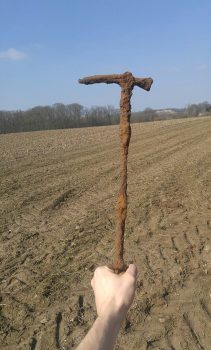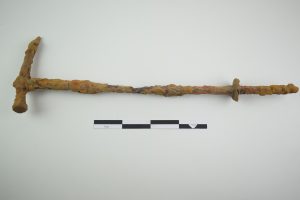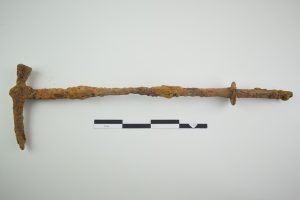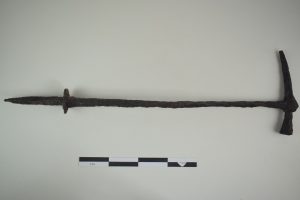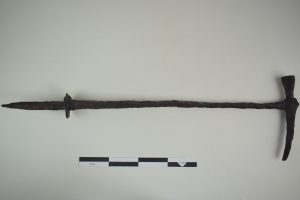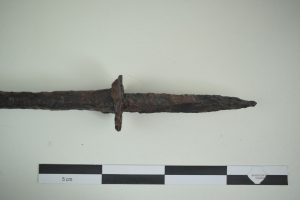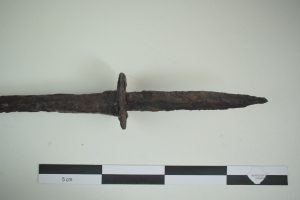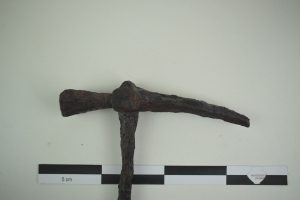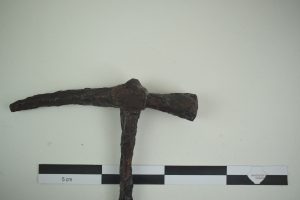16th century knightly warhammer
- Date of discovery: 2018-03-05
- Aproximate location of discovery: Drogenhof, Lubbeek, Vlaanderen
- Context: Debris from building, 14th to 16th century coinage
- MEDEA ID: 31599
In the late 16th century, knightly German warhammers represented a transitional blend of medieval tradition and early modern warfare. Designed for piercing armor, these weapons featured a sturdy hammerhead opposite a pointed beak, capable of concentrating force to penetrate plate armor. By this period, full suits of armor were becoming less common on the battlefield due to the rise of firearms, but warhammers remained effective in close combat and were often used by heavy cavalry or elite guards. Ornate examples from this era show craftsmanship suited to both battle and ceremonial use, reflecting the lingering chivalric culture among German nobility.
The warhammer may plausibly be connected to the Siege of Leuven in 1635, during the Franco-Dutch War against Spain in the Southern Netherlands, a significant campaign within the broader context of the Thirty Years’ War (1618–1648). This war, initially a religious conflict between Protestant and Catholic states within the Holy Roman Empire, had by the 1630s escalated into a pan-European struggle for political dominance. The Spanish Habsburgs controlled the Southern Netherlands (roughly modern Belgium), while France and the Dutch Republic sought to weaken Spanish influence.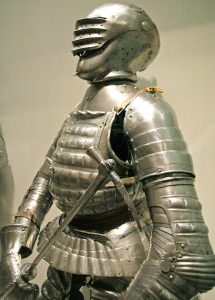
In June 1635, a joint Franco-Dutch army invaded the Spanish Netherlands. Their campaign targeted several key cities, among them Tienen, which fell quickly, and Leuven, which they laid siege to shortly afterward. The siege began in July 1635 and lasted several weeks. Despite initial gains, the allies failed to breach the city, largely due to logistical issues, disease, and the arrival of a Spanish relief force under Cardinal-Infante Ferdinand of Austria. The besiegers were ultimately forced to retreat, and the failure marked a turning point in the campaign.
If the warhammer in question was already several decades old by the time of the siege, it may have been a hand-me-down weapon or a symbolic sidearm still in use by a cavalry officer or member of the urban militia. While firearms and pikes dominated 17th-century battlefields, traditional melee weapons like warhammers remained in use, particularly in close quarters combat and during urban fighting, where narrow streets and fortifications limited the effectiveness of muskets. Additionally, warhammers were valued for their ability to crack helmets or damage armored limbs, which was still relevant against cuirassiers or pikemen with partial armor.
